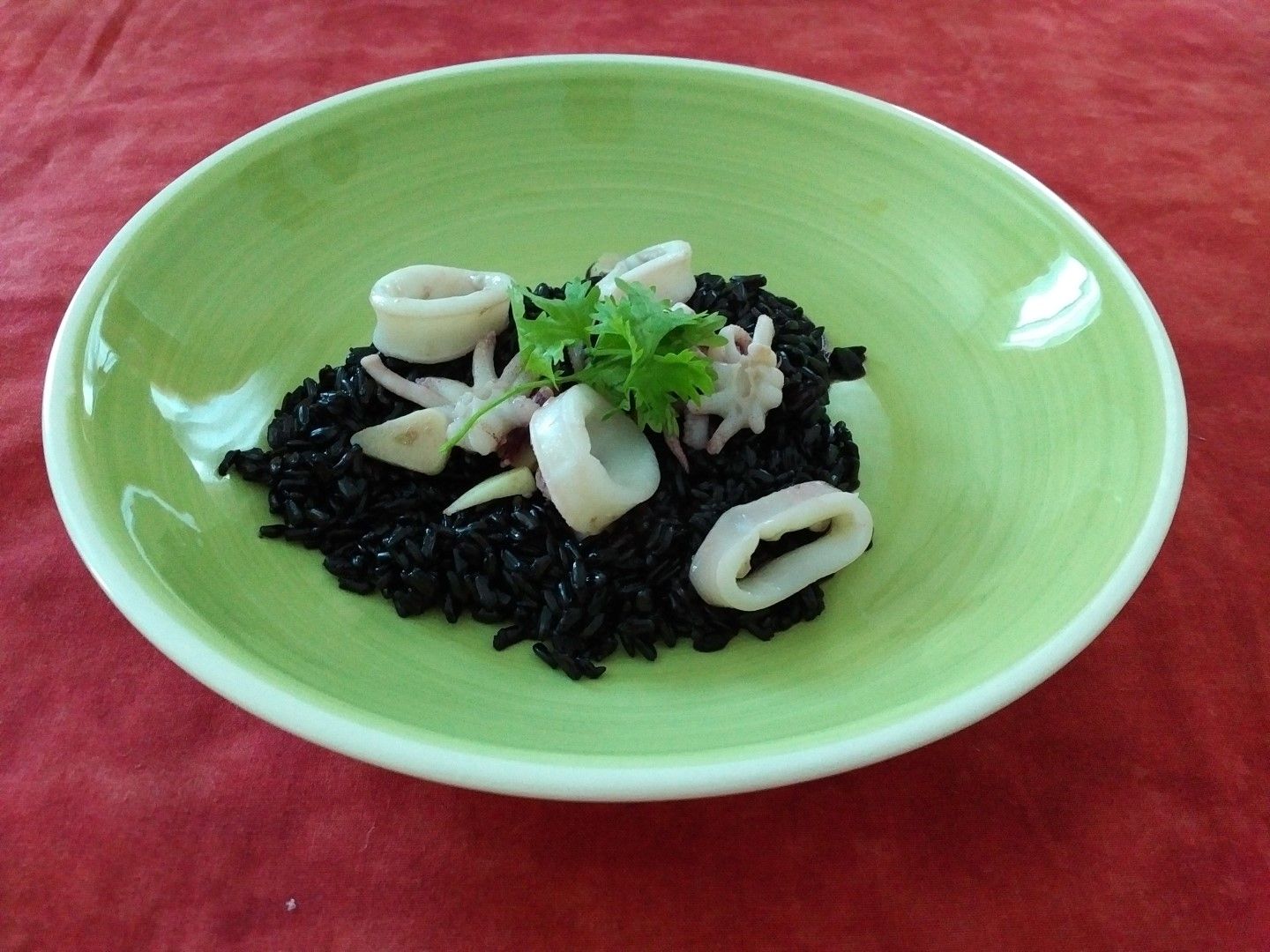Once upon a time there was an Emperor in China who had his own rice which no-one outside the Palace walls was allowed to eat. Crops were limited and all harvests of this rice were strictly reserved for him and the royal household. So the story goes of why Chinese black rice (Oryza sativa) is still called “forbidden” to this day.
I had, of course heard of black rice before. Most Italians are familiar with black rice, namely Venere. Originally imported from China, it has been grown in the northern rice plains of Italy for generations. The most common variety is Venere rice, although there is a second, less known variety, called Nerone rice. Both of these, incidentally, are naturally gluten free and suitable for people who are gluten intolerant.
Black rice, whether you call it forbidden, Venere or Nerone, is not to be confused with the white or brown rice used to make Paella Negra (black rice paella) or risotto nero (black rice risotto). In both of these dishes the black comes from the addition of squid ink, not from the colour of the rice itself.
Nerone (forbidden) rice is a medium-grain non glutinous heirloom rice. There are also other types of black rice, such as Thai black rice or Black Japonica rice but they differ in a number of ways. Thai black rice is a sticky glutinous rice and tends to be used in desserts, whereas Black Japonica rice is a mix of black short and medium-grains grown together.
The health benefits of forbidden black rice
Being originally a Chinese rice variety, it is not surprising that Traditional Chinese Medicine (TCM) should have classified this rice. It is in fact believed to act as a blood tonic.
In Western practices the greatest benefit of consuming this type of rice is that the bran surrounding the whole grains is high in the antioxidant anthocyanin. This is what gives it its colour, like in other foods including blackberries and blueberries. Surprisingly, though, the levels of antioxidants in the rice far outweigh those found in blueberries, and are also much higher than in any other rice.
These antioxidants combat free radicals and inflammation.
Other characteristics and health benefits include:
- The phytonutrients contained in the grains help to detoxify the body
- The high fibre content helps to prevent constipation, bloating and other digestive issues, as well as helping the metabolism combat insulin resistance by slowing down the absorption of sugar in the blood.
- It can also help reduce total and LDL cholesterol (the bad type) and the formation of plaque in the arteries, therefore protecting the heart from atherosclerosis.
Black rice vs Brown rice vs Red Rice vs Wild rice
In previous blog posts I used brown rice and red rice as healthier alternatives to white rice. In my kitchen I have also used wild rice. How do these compare and what are the differences? How to choose the healthiest rice for you?
First of all I should point out that Wild rice is not rice at all, but a grain from a weed that grows in water. It is not even related to the rice (Oryza) family. Its latin name is Zizania palustris. However, due to its popularity for the health conscious, I have included it for the purpose of comparison.
In terms of antioxidants Black rice wins hands down. If you are looking for the lowest GI then your best choices are wild or Brown rice. For the lowest carbohydrate content turn to red rice (Oryza punctata), and for the highest protein content Brown rice is top of the list. Your needs, and taste, will dictate your choice.
Below is a table which includes the nutritional values of each type per 100gm of cooked rice with information I put together from various sources.
|
|
BLACK rice |
BROWN rice |
RED rice |
WILD rice |
|
G.I. |
42 |
11 |
55 |
10 |
|
protein |
9.6g |
2.3g |
6g |
4g |
|
carbohydrates |
76g |
23.5g |
14.4g |
21.3g |
|
fibre |
5.5g |
1.89g |
4.4g |
1.8g |
|
sugars |
1.9g |
- |
0g |
0.7g |
|
iron |
1.7mg |
0.5mg |
5.5mg |
0.6mg |
|
calcium |
- |
26.4mg |
44mg |
3mg |
How to incorporate black rice into your diet
Black rice can be used in the making of porridge, desserts, bread, noodles and rice salads, as well as risotto or as a side served with vegetables. As all wholegrain rice, it takes longer to cook than white rice, but it is well worth the effort. You should follow packet instructions, however, generally speaking, it cooks in about 40 minutes to 1 hour depending on whether it is 100% wholegrain or not. This can be greatly reduced by previously soaking it for at least 1 hour. This process will also make it more easily digestible. Just remember to rinse it before use.
I prepared my Nerone rice by simply boiling it in lightly salted water and serving it with some lightly sautéed baby squid rings cooked with a touch of fresh garlic. I served it with a sprinkle of extra virgin olive oil and a sprig of fresh coriander. If you are looking for added flavour you can boil the rice in fish broth first, transfer to the pan with the squid and lightly toss it before serving warm.


